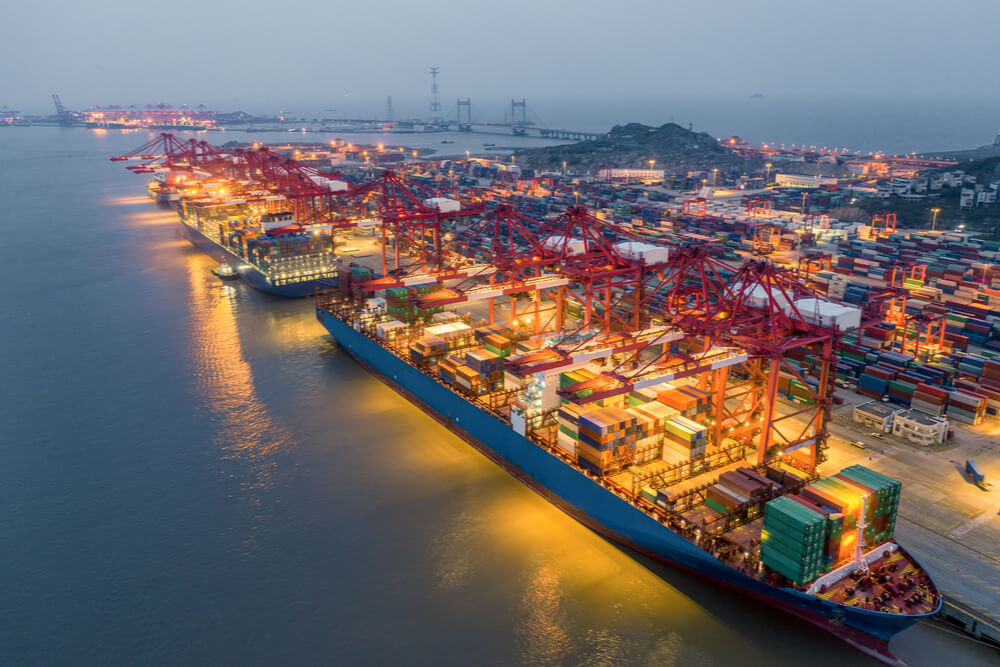
When China ordered upwards of 25 million Shanghai residents to shelter at home, the move sidelined truckers, and freight experts anticipate another wave of rising costs and supply chain disruptions.
When the April 1 directive was issued, Chinese truck drivers were swept up in the lockdowns. Even some essential goods and materials were left in limbo without truckers to compete transportation. A Shanghai-based truck driver named Zhu Zhongtao was reportedly hauling urgently needed materials when the mandate came down. He was stopped at a toll gate outside Wenzhou County and sent into quarantine.
Getting back to work was an uphill battle as officials required three different proof of health declarations as well as on-site Covid testing. Without proving he was Covid-negative and producing the required documents, Zhu would have endured the full lockdown and remained sidelined. It wasn’t until the last week of April that Chinese officials began even loosening restrictions. That includes interacting with more than 160 million people engaged in businesses and transportation in the Yangtze River Delta region. When coupled with affected neighboring Zhejiang and Jiangsu provinces, approximately 20 percent of China’s GDP was impacted.
“A supply chain only works if all the links are acting equally in unison,” Tu Le, managing director of mobility consultancy Sino Auto Insights, reportedly said. “That includes workers at the manufacturers and suppliers (and) truckers on the inbound and outbound side. If any one of those links fails, the entire system may run slowly or not at all.”
Shanghai truck volumes slipped by as much as 70 percent during April compared to the previous month. The European Union Chamber of Commerce in China estimated truck availability was down by at least 40 percent. But the linchpin to this crisis-level supply chain snarls stems from the Port of Shanghai moving the highest volume of tonnage in the world. In terms of freight movement, Shanghai ranks number one and is one of only four considered a “large-port Megacity.”
As Shanghai slowly extricates itself from the latest Covid wave, U.S. ports may want to brace themselves for another supply chain shock. Companies will likely be racing to move goods and materials, causing supply chain bottlenecks that could rival the 110 container vessels stuck idling off the coast of California in 2021. Adding 25 million people back into the car and truck-driving ranks may cause fuel prices to tick up a few cents.
Although reports coming out of China indicate the Port of Shanghai handled the health and safety restrictions smoothly, JB Hunt CCO Shelley Simpson begs to differ. She reportedly said the freight hauling operation experienced “temporary relief” during the recent lockdown. But another surge from the world’s largest port will likely include rising freight rates and delays.
“That certainly is going to make its way back into the US here this summer. It just takes a little bit of disruption to really change the environment all over again,” Simpson reportedly said. “We do forecast that to get a lot worse as we come into the summer months, particularly with what’s happening in the supply chain from an ocean perspective or in China coming inbound.”
Sources: wsj.com, fortune.com











First off, I realize we are talking about containerized cargo here. Why can’t at least some of this freight be loaded onto airplanes? I understand it would most likely need to be removed from containers and then reloaded upon arrival at destination airports. Why can’t this be done, aside from the cost factor which is in play already as this freight sits on floating warehouses waiting to be unloaded.
Nuclear war will reset all of this.